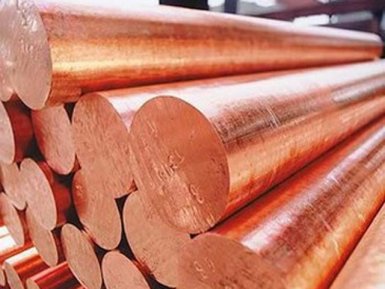Production of tantalum and tantalum alloys

Are you interested in the production of tantalum and its alloys from the supplier company AvecGlob? Here you will find the necessary information on this topic.
Preliminary operations
Extraction and purification of tantalum, including separation from niobium in these various tantalum-containing mineral concentrates, is usually carried out by treating the ores with a mixture of hydrofluoric and sulfuric acids at elevated temperatures. This leads to the fact that the values of tantalum and niobium dissolve in the form of complex fluorides, and the numerous impurities that are present also dissolve. Other elements, such as silicon, iron, manganese, titanium, zirconium, uranium, thorium, rare earths, etc., are usually also present. Filtration of the suspension and further processing by solvent extraction using methyl isobutyl ketone (MIBK) or liquid ion exchange using an amine extractant in kerosene, provides highly purified solutions of tantalum and niobium. As a rule, the values of tantalum in solution are converted to potassium tantalum fluoride (K 2 TaF 7) or tantalum oxide (Ta 2 O 5).
There are alternative methods that are used when they are better suited for specific local conditions. The mineral concentrate used includes mixing the ground concentrate with coke and passing it through the chlorination stage, which releases rare earth elements and other elements, including most of the thorium. The resulting gas of titanium niobium tantalum oxychloride decreases with temperature, which leads to the formation of iron,
thorium and alkali metals for precipitation. The purified titanium-niobium-tantalum oxychloride is then cooled to a liquid and distilled to recover low-boiling gaseous titanium chloride, after which the niobium-tantalum oxychloride is further chlorinated to give NbCl 5 and TaCl 5 .
These chlorides are fractionally distilled, after which niobium chloride reacts with water vapor to produce a hydroxide which is calcined to an oxide. Tantalum chloride reacts with ammonium hydroxide to produce an oxide.
Supplier — AvekGlob company — offers tantalum metal products that meet the requirements of international and domestic standards. Products are offered at affordable prices from the manufacturer. The supplier guarantees the timely delivery of tantalum profiles to any address specified by the consumer.
Powder recovery
Metallic tantalum powder is usually obtained by reducing sodium potassium tantalum fluoride in a molten salt system at a high temperature.
The metal can also be obtained by reducing carbon monoxide or aluminum, or reducing tantalum chloride with hydrogen or alkali.
Consolidation of metal powder for ingot and processing into various metallurgical products begins either with vacuum arc melting or with electron beam melting of metal raw materials consisting of powder or high-grade scrap where there are no elements with a boiling point greater than that of tantalum.
The ingots are used for the production of various metallurgical products, named earlier. Ingot and pure tantalum wastes are used in the production of alloys for ground and air turbines.
The tantalum industry often distinguishes between primary and secondary producers. The first produce only tantalum ingots, which need further processing, and the latter — directly tantalum rolling.
Supplier — AvekGlob Company — offers to purchase a range of tantalum metal products meeting the necessary requirements. Products can be bought at a price formed on the basis of European and world standards. Implementation is possible in bulk and retail, for regular customers, a flexible system of discounts operates.


